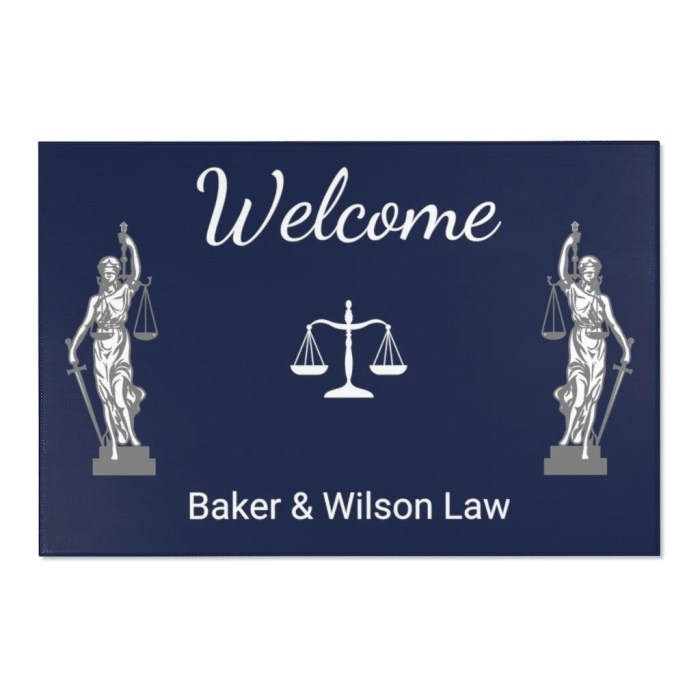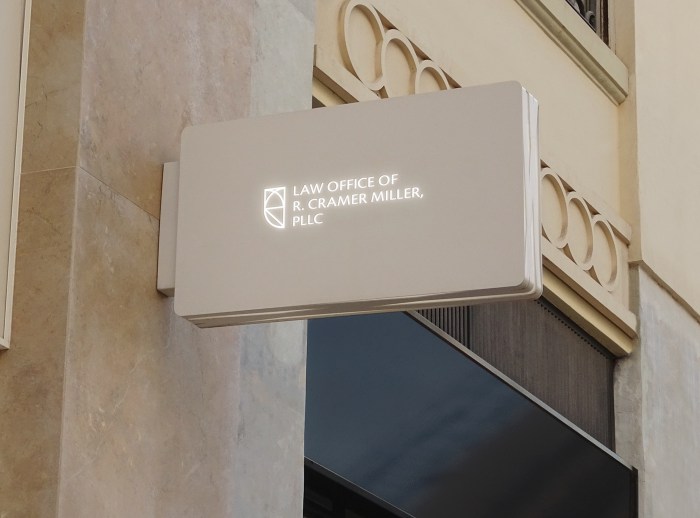lawoffice sets the stage for this enthralling narrative, offering readers a glimpse into the intricate world of legal practices. Within these walls, one discovers a dynamic structure where roles and responsibilities intertwine to deliver essential services. From the initial client consultations to the sophisticated technology that enhances operations, law offices are a hub of organized chaos, where every detail matters.
The exploration of a law office’s structure reveals the pivotal roles of attorneys, paralegals, and support staff, each contributing to a seamless workflow. The range of legal services offered is extensive, catering to various client needs, while the technology employed today revolutionizes how these services are delivered. As we delve deeper, we uncover strategies for effective client management and innovative marketing techniques that not only attract potential clients but also build long-lasting relationships.
Law Office Structure

The organizational structure of a law office is pivotal in ensuring efficient operations and effective client service. Typically, law offices are organized in a hierarchical manner that delineates roles, responsibilities, and communication channels. This structure not only facilitates the collaborative nature of legal work but also ensures clarity in decision-making and accountability.The roles within a law office are distinct yet interconnected, forming a cohesive team that addresses client needs and legal challenges.
When navigating legal challenges, understanding the role of abogados de la ley limón can be crucial. These lawyers specialize in specific legal frameworks that may affect your situation, ensuring you receive the right guidance. Their expertise helps you effectively manage any disputes, making it easier to achieve favorable outcomes.
Key personnel in a law office often include partners, associates, paralegals, and administrative staff, each playing a vital role in the overall functioning of the firm.
Key Personnel and Their Responsibilities
In understanding the roles within a law office, it is essential to recognize how each position contributes to the firm’s success. The following list Artikels the primary roles and their respective responsibilities:
- Partners: Senior attorneys who lead the firm, make strategic decisions, manage client relationships, and oversee the overall operations of the office.
- Associates: Junior attorneys who work under partners, handling cases, conducting legal research, drafting documents, and representing clients in court.
- Paralegals: Support staff who assist attorneys with case preparation, legal research, and administrative tasks, allowing lawyers to focus on legal matters.
- Legal Secretaries: Administrative professionals who manage correspondence, schedules, and documentation, ensuring the smooth day-to-day operations of the office.
- Office Manager: Responsible for the administrative functions of the law office, including budgeting, human resources, and office logistics.
The hierarchy within a law office typically flows from partners at the top to associates and paralegals, creating a clear channel for communication and task delegation. Each level has defined reporting relationships that facilitate effective collaboration. In a functional law office, communication is critical. Regular meetings and briefings ensure that all personnel are aligned with the firm’s goals and client needs.
The flow of information usually follows this pattern: partners provide direction and strategy to associates, who then relay instructions and insights to paralegals and administrative staff. This structured communication helps in maintaining clarity and efficiency in case management.
The organizational structure of a law office is not merely a hierarchy; it embodies the collaborative spirit necessary for effective legal practice.
Legal Services Offered

Law offices provide a wide range of legal services tailored to meet the diverse needs of their clients. These services are designed to cover various aspects of law and are crucial for individuals, businesses, and organizations seeking legal assistance. Understanding what services are available can help clients make informed choices regarding their legal matters.Legal services encompass numerous areas, and law offices typically specialize in several fields, enabling them to offer comprehensive legal support.
The following list Artikels common legal services that clients may seek:
Comprehensive List of Legal Services
The breadth of legal services available is extensive, reflecting the complexity of legal systems and the specific needs of clients. The following are key categories of services typically provided by law offices:
- Civil Litigation: Representation in lawsuits involving disputes between individuals, organizations, or government entities.
- Criminal Defense: Legal defense for individuals charged with criminal offenses, including felonies and misdemeanors.
- Family Law: Services related to divorce, child custody, adoption, and other family-related legal matters.
- Corporate Law: Assistance with business formation, contracts, compliance, and litigation for corporations and partnerships.
- Real Estate Law: Guidance on property transactions, leases, and disputes involving real estate.
- Intellectual Property: Protection of creations such as patents, trademarks, and copyrights.
- Bankruptcy Law: Guidance through bankruptcy filings and related legal processes.
- Employment Law: Services related to employee rights, workplace disputes, and compliance with labor laws.
- Estate Planning: Legal assistance in creating wills, trusts, and navigating probate processes.
- Personal Injury: Representation for individuals injured due to negligence or wrongdoing by others.
Client Consultations and Intake Processes
The process of client consultations and intake is structured to ensure that law offices gather all necessary information for effective representation. Initial consultations typically involve understanding the client’s legal issue, discussing potential strategies, and establishing rapport. Clients often begin with an initial meeting, which can take place in-person or virtually. During this meeting, attorneys gather information about the case, which may include details about the legal matter, important deadlines, and any relevant documents.
In complex legal scenarios, engaging an abogado kubosh can provide significant advantages. These attorneys are well-versed in navigating intricate legal landscapes, enabling them to offer tailored advice. Their knowledge empowers clients to tackle legal issues with confidence, ensuring that your rights are protected throughout the process.
The intake process generally includes the following steps:
- Initial Contact: Clients reach out to the law office via phone, email, or online forms to request a consultation.
- Scheduling: Appointments are arranged based on the urgency and complexity of the matter.
- Information Gathering: Clients provide background information and documents relevant to their legal issue.
- Conflict Check: The law office ensures there are no conflicts of interest that would prevent representation.
- Consultation: A detailed discussion occurs where the attorney assesses the situation and advises on possible next steps.
Determining Legal Fees
Law offices utilize various methods to determine fees for their services, reflecting the nature of the legal work and the complexity of the case. Understanding these fee structures is essential for clients to plan their legal expenses effectively.Common methods for determining legal fees include:
- Hourly Rates: Clients are charged based on the amount of time the attorney spends on the case, typically billed in increments of one-tenth of an hour.
- Fixed Fees: A set amount is charged for specific services, such as drafting a will or handling a straightforward divorce.
- Contingency Fees: The attorney receives a percentage of any settlement or judgment awarded to the client, commonly used in personal injury cases.
- Retainers: Clients pay a fee upfront to secure the attorney’s services, which is then drawn upon as work is completed.
Understanding the fee structure is crucial for clients to ensure they can manage their legal costs effectively.
Client Management in Law Offices
In the legal profession, effective client management is crucial for building trust, ensuring satisfaction, and fostering long-term relationships. Law offices must implement strategic practices to enhance client interactions, maintain ethical standards, and efficiently address feedback. A well-structured client management approach not only improves the overall client experience but also strengthens the firm’s reputation.
Effective Methods for Managing Client Relationships
Law offices can benefit significantly from adopting systematic approaches to client relationship management. Key methods include:
- Personalized Communication: Tailoring communication to meet the specific needs and preferences of each client fosters a sense of value and connection.
- Regular Updates: Keeping clients informed about case progress through periodic updates strengthens trust and reduces anxiety.
- Utilizing Technology: Implementing client management software can streamline communications and organize client data, enhancing efficiency and accessibility.
- Establishing Clear Expectations: Clearly outlining timelines, potential outcomes, and fees helps to prevent misunderstandings and builds trust.
- Dedicated Client Service: Assigning specific team members to handle client inquiries ensures personalized attention and prompt responses.
Maintaining Confidentiality and Ethical Standards
Upholding confidentiality and ethical standards during client interactions is paramount for law offices. Several strategies can help ensure compliance:
- Employee Training: Regular training sessions on ethical practices and confidentiality laws equip staff with the knowledge needed to protect client information.
- Secure Communication Channels: Utilizing encrypted communication methods for sharing sensitive information minimizes the risk of data breaches.
- Access Controls: Implementing strict access controls ensures that only authorized personnel can view confidential client information.
- Document Management Systems: Secure document storage solutions help maintain the integrity of sensitive client records and facilitate easy retrieval.
- Clear Privacy Policies: Transparent privacy policies that inform clients of their rights and how their information will be used promote trust and compliance.
Handling Client Complaints and Feedback
Addressing client complaints and feedback effectively is vital for maintaining strong relationships. An organized approach involves:
- Active Listening: Ensuring that clients feel heard and understood is essential in resolving issues promptly.
- Timely Responses: Responding to complaints quickly demonstrates commitment to client satisfaction and helps to mitigate negative experiences.
- Documenting Complaints: Keeping a record of client complaints allows for patterns to be identified and addressed within the firm.
- Providing Solutions: Offering clear solutions or alternatives to issues raised by clients shows an eagerness to rectify problems and maintain trust.
- Feedback Mechanisms: Implementing structured feedback channels, such as surveys or follow-up calls, helps in gathering insights that can lead to service improvements.
“Effective client management is not just about retaining clients; it’s about creating lasting partnerships built on trust and mutual respect.”
Technology in Law Offices: Lawoffice
In the evolving landscape of legal practice, technology is becoming increasingly integral to the smooth operation of law offices. Embracing technological advancements not only enhances efficiency but also improves client service and facilitates better case management. Law offices that leverage technology are better positioned to adapt to the dynamic demands of the legal industry and provide superior services to their clients.The integration of technology in law offices is essential for streamlining processes and improving productivity.
Essential technologies can significantly impact various aspects of legal practice, from document management to client communication. Below are some key technologies that law offices should consider implementing:
Essential Technologies for Law Offices
The following technologies are vital for enhancing operational efficiency in law offices:
- Cloud Computing: Enables secure data storage, easy access to documents, and seamless collaboration among team members regardless of location.
- Document Management Systems (DMS): Facilitates the organization, storage, and retrieval of legal documents, reducing physical paper usage and increasing efficiency.
- Time Tracking and Billing Software: Automates billing processes, ensuring accurate invoicing and helping attorneys manage billable hours effectively.
- Cybersecurity Solutions: Protects sensitive client information from data breaches and cyber threats, ensuring compliance with legal privacy standards.
- Legal Research Tools: Streamlines the research process, providing access to databases and resources that enhance case preparation.
Role of Case Management Software
Case management software is a cornerstone of modern law practice, offering comprehensive solutions to manage all aspects of casework. These platforms provide a centralized system for tracking case details, deadlines, and communications, which significantly enhances operational efficiency. With features such as task automation, calendaring tools, and integrated client portals, case management software facilitates better organization and collaboration among team members.
For instance, attorneys can easily track case progress, manage deadlines, and ensure that all documents are up-to-date and accessible. This not only saves time but also minimizes the risk of errors that could arise from manual tracking.
Enhancing Client Communication and Documentation
Utilizing digital tools can significantly improve communication with clients, fostering a more transparent and efficient process. Effective client communication is essential for maintaining trust and ensuring that clients remain informed about their cases. Consider the following tips for enhancing client communication and documentation:
- Client Portals: Implement secure online portals where clients can access their case information, upload documents, and communicate with their attorneys.
- Email Automation: Use automated email systems to send reminders, updates, and important notifications, ensuring clients are aware of significant developments.
- Video Conferencing: Leverage video conferencing tools for remote meetings, making it easier for clients to connect with their attorneys without the need for in-person visits.
- Document Sharing Platforms: Utilize secure document sharing services that allow clients to access and review important legal documents at their convenience.
Incorporating these technologies not only enhances operational efficiency but also positions law offices to provide a higher level of service, ultimately benefiting both the firm and its clients.
Marketing Strategies for Law Offices

In the competitive landscape of legal services, a well-structured marketing strategy is essential for law offices to attract and retain clients. A comprehensive marketing plan not only helps in establishing a strong brand presence but also allows firms to effectively communicate their expertise and value proposition to potential clients. The following Artikels an effective framework for developing marketing strategies tailored specifically for law offices.
Framework for a Comprehensive Marketing Plan, Lawoffice
A strategic marketing plan for a law office should encompass several key components that work cohesively to enhance visibility and client engagement. The elements of the framework include:
- Market Research: Understanding the target audience, their needs, and preferences is vital. Conduct surveys or analyze competitors to identify market gaps.
- Brand Positioning: Clarifying the firm’s unique value proposition differentiates it from competitors. This could be based on specialization, client care, or innovative solutions.
- Content Marketing: Providing valuable content that educates clients about legal topics can establish authority and build trust, such as blogs, newsletters, and legal guides.
- Networking and Partnerships: Building relationships with other professionals and organizations can lead to referrals and broaden the client base.
- Performance Metrics: Establishing KPIs to assess the effectiveness of marketing efforts ensures ongoing optimization and adjustment of strategies.
Leveraging Social Media to Attract Potential Clients
Social media platforms offer law offices a unique avenue to engage with potential clients and showcase their expertise. Utilizing social media effectively involves several strategic approaches:
- Engaging Content Creation: Posting informative articles, legal tips, and case studies can attract followers who may require legal services.
- Client Testimonials: Sharing success stories and positive feedback builds credibility and trust with prospective clients.
- Interactive Engagement: Engaging with followers through Q&A sessions, live videos, or polls can create a community feel and encourage participation.
- Targeted Advertising: Leveraging platforms like Facebook and LinkedIn for targeted ads allows lawyers to reach specific demographics likely to need their services.
The Importance of an Informative and User-Friendly Website
A law office’s website serves as the digital storefront and is crucial for making a positive first impression. An effective website encompasses several vital aspects that enhance user experience and facilitate client acquisition:
- Mobile Responsiveness: With increasing mobile use, a website must be optimized for smartphones and tablets, ensuring accessibility for all users.
- Clear Navigation: An intuitive layout that allows users to find information quickly improves user experience and reduces bounce rates.
- Comprehensive Information: Detailed descriptions of services, attorney bios, and contact information should be readily available to instill confidence in potential clients.
- Optimization: Utilizing search engine optimization techniques ensures the website ranks higher in search results, driving more traffic and potential clients to the site.




